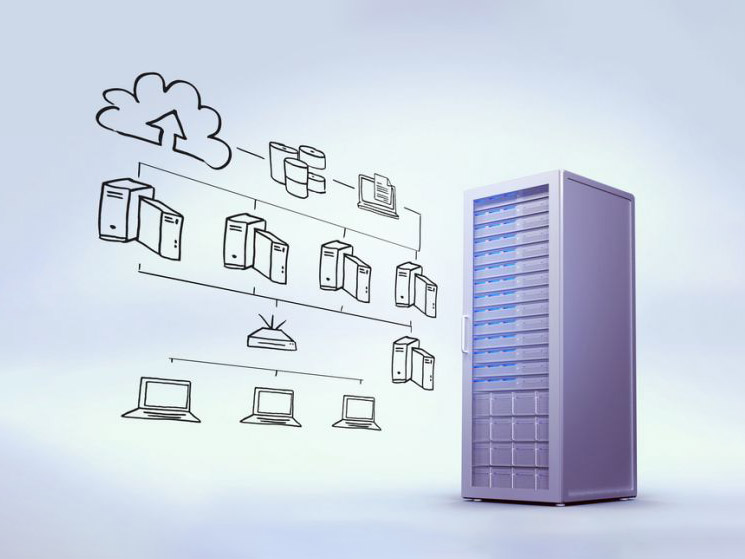The US government has shaved $3.6 billion dollars of its annual IT budget by focusing on cloud computing, implementing unconventional data center design (converged solutions) and other technological changes. Over half of the savings have been possible due to data center convergence alone.
Like the US government, corporate IT departments are quickly cottoning on to the many benefits of a converged data center design. Companies that have already started on this journey report the following benefits:
- Reduced Costs: A consolidated data center requires less hardware, draws less power and also saves on IT personnel costs.
- Increased Control: The consolidated data center architecture is more straightforward and easier to control. Traffic patterns and volumes are more visible and clearly defined.
- Easier to Secure: With fewer sites to manage, security is easier and costs less. It also reduces the need to communicate between facilities, thereby increasing the effectiveness of information security.
- Disaster Recovery: With all the vital components in a single physical location it becomes easier to plan and implement a disaster recovery solution.
Hyperconvergence: Simplifying Operations, Saving Cost
As companies look to consolidate their data center operations, Hyperconverged networks have emerged as one of the fastest growing concepts for deploying IT in data centers. It is so hot that Gartner expects it to go from zero in 2012 to a $5 billion market by 2019. At its most basic a hyperconverged infrastructure involves a single solution offering compute, storage, networking and virtualization – all managed through automated software.
Hyperconvergence delivers simplification and savings by consolidating all required functionality into a single infrastructure stack running on an expandable pool of resources. Furthermore, an Hyper Converged Architecture goes far beyond servers and storage and includes:
- Data protection (backup and replication)
- Dedpulication
- Wide-area network optimization
- Solid-state drive arrays
- SSD cache arrays
- Public cloud gateways
A hyperconverged network has significant benefits that include:
- Commodity Hardware: Commodity hardware equals lower cost. Businesses can replace/add hardware at a much lower cost than possible with legacy data center systems.
- Centralized Management: All components — compute, storage, backup to disk, cloud gateway functionality etc — are combined in a single shared resource pool. Regardless of how widespread physical resources are, hyperconverged systems handle them as though they were all sitting next to one another. Resources spread across multiple physical data center systems are managed from a single, centralized interface.
- Scalability: Hyperconverged Technology uses a scalable building-block approach that allows IT to expand by adding units. Granular scalability is one of the hallmarks of this infrastructure.
- Lower cost: Hyperconverged integrated systems have a lower cost of entry compared to the legacy infrastructure.
- Automation: With hyperconverged networks there is no need to create automated structures with hardware from different manufacturers or product lines. Everything is encapsulated in one environment. Resources are combined and centralized management tools are already in place.
- Virtualization: Hyperconverged infrastructure uses virtual machines as the most basic construct of the environment.
- Shared Resources: Hyperconverged technology allows companies to deploy different kinds of applications in a single shared resource pool.
- Data Protection: In a hyperconverged environment backup, recovery and disaster recovery are built in. Hence, they are part of the infrastructure, not third-party products that need to be integrated.
- Single Vendor: Customers get one point of contact for the life of the system. From initial inquiry to system stand-down. Because hyperconverged systems are tested, customers have less need for pilot projects.
Cisco: Single Vendor for Hyperconvergence
Cisco has taken an early lead providing robust hyperconverged systems with the Cisco HyperFlex Systems. It delivers flexible, scalable, enterprise-class hyperconverged solutions that smoothly integrate with an enterprises’ existing data center design. The Cisco solution includes an integrated network fabric and data optimization capabilities that consequently unlock the full potential of hyperconvergence for a wider range of workloads and use cases.
The Cisco HyperFlex Systems is the first hyperconverged platform that is designed as an end-to-end software-defined infrastructure. Cisco HyperFlex Systems support a broader range of applications and workloads in the data center, remote locations, and edge computing environments. This new generation extends the ease of hyperconverged system deployment, management and support beyond the central data center.
Proactive for Hyperconverged Systems
Proactive, with more than 21 years of IT implementation experience and a Cisco Tier 1 Recommended partner, is the right choice to help you implement the Cisco HyperFlex Systems at your data center.
Over the years we have achieved 100% on-time delivery of material at customer site. We have a network of service partners across the country to provide our customers 24*7 post-sales support from certified engineers. Also, we are ISO 9001:2008 and ISO/IEC 27001:2013 certified.
We have been providing Cisco products to our customers since 2000. Proactive attained the Cisco Gold certification in 2014. Our engineers have attained the highest level of certifications for each of the Cisco technologies. We follow PPDIOO project guidelines, which help us complete projects on schedule.
So if you are looking at data center consolidation, Proactive Data Systems can help you get there faster and more efficiently than any other vendor.





